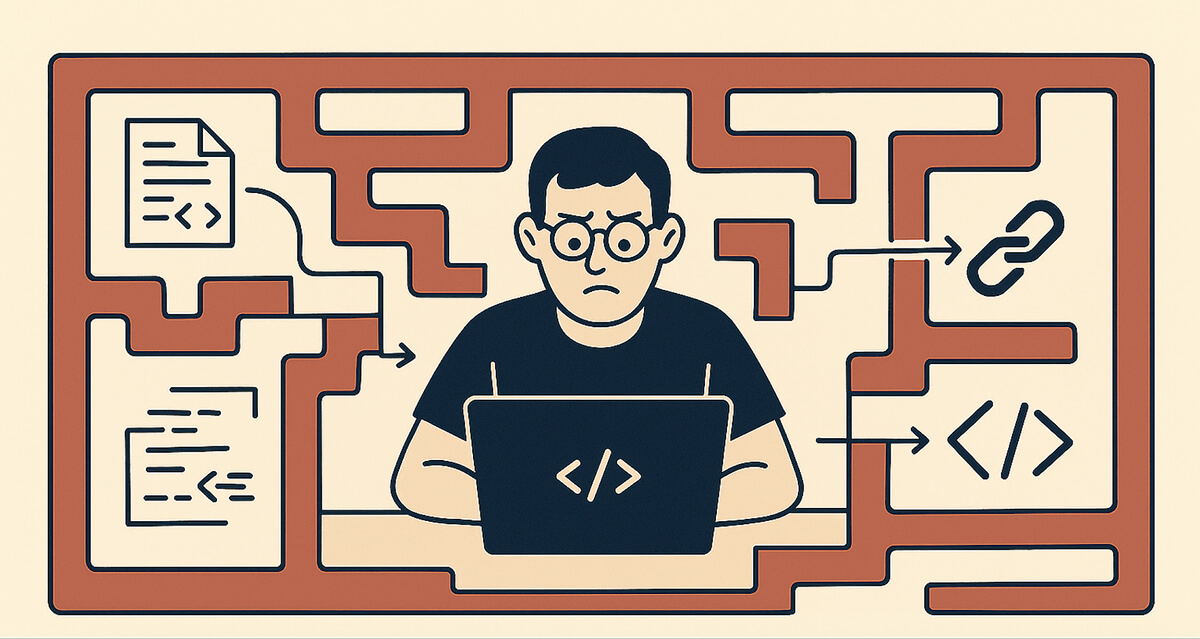AI coding assistants are praised for saving developers’ time. But do they actually simplify code, or do they cover it with a complex code layer? Before you add another AI coding assistant to your IDE, let’s examine how these tools affect complexity, maintainability, security, and cost.
Why Code Complexity Still Matters
AI coding assistants can write code in seconds, but someone still has to be able to read that code later. If each auto-generated file adds extra layers, hidden links, or copy-pasted logic, the project soon feels like a maze. Engineers then spend more and more of their time tracing how things fit together instead of building new features. So, the promised “saving developers time” never actually happens.

Clean, simple code reduces bug risk, keeps on-call shifts calm, and enables both humans and assistants to work faster in the future. That’s why the best AI coding assistants for enterprises should be judged not only by how many lines they produce, but by how much easier the final codebase is to understand.
Where AI Coding Assistants Can Reduce Complexity
Modern AI coding assistants help engineering teams keep codebases simple in four main ways:
- Removing boilerplate. An AI assistant can automatically generate test scaffolding, DTOs, and serializers, so developers spend their time on domain logic instead of repetitive glue code.
- Enforcing project style. Because the model trains on your own repository, every suggestion follows your naming rules, directory structure, and lint settings. This keeps the codebase uniform and easier to read.
- Spotting refactor opportunities. When a function becomes too long or deeply nested, the assistant flags it and proposes clean, smaller helpers or built-in library calls that reduce cyclomatic complexity.
- Writing documentation as it goes. It can add comments, usage snippets, and README updates in the same pull request, saving developers time when they revisit the module months later.
How Assistants Sometimes Increase Complexity
Not every suggestion is an improvement. Without guardrails, assistants introduce new kinds of technical debt:
- Context gaps: Language models excel at token prediction but struggle to grasp the full architectural intent. Thus, generated patches may compile but overlook non-functional requirements.
- Edge-case blindness: When code paths depart from training-set norms, assistants default to “happy-day” logic, leaving tricky validation or concurrency concerns for later fixes.
- Surface-level refactors: A tool might rename variables and split methods without re-examining deeper data flows. This may give a false sense of cleanliness.
- Volume over vision: High-velocity generation can outpace code review capacity, letting subtle regressions slip through.
Practices for Keeping Complexity in Check While Using AI
Here is how you can maximize the benefits of AI assistants while keeping complexity to a minimum.
- Guardrail rules in prompts. Instruct assistants to respect existing architecture boundaries and naming standards.
- Metric-driven reviews. Track cyclomatic complexity, dependency depth, and duplication before and after each AI-generated change. Reject patches that push metrics upward.
- Human-in-the-loop refactoring. Pair AI suggestions with senior review sessions. Turn auto-generated diffs into teachable moments for junior staff.
- Edge-case augmentation. After accepting a block of AI code, immediately ask the assistant (or a separate test agent) to enumerate edge cases and unit tests it might have missed.
- Periodic debt audits. Schedule quarterly complexity reviews to ensure the overall trajectory is down, not up. Treat any rise as a signal to tighten prompts or approval criteria.
Choosing the Best AI Coding Assistants for Enterprises
Not all tools are alike. When evaluating the best AI coding assistants for enterprises, look for:
- Policy compliance: SOC 2, ISO 27001, on-prem, or VPC deployment options that keep proprietary code off third-party servers.
- Repository awareness: Fine-tuned models that learn your domain objects and layering rules rather than generic GitHub patterns.
- Explainability features: Side-by-side diff views and “why I suggested this” annotations help reviewers judge the impact on complexity.
- Quality metrics integration: Native hooks into SonarQube, CodeClimate, or custom static-analysis pipelines so proposals are auto-scored.
- Admin dashboards: Enterprise controls to blacklist risky APIs, enforce style guides, and track adoption ROI.
The Bottom Line
AI coding assistants eliminate boilerplate and suggest refactors, saving developers time. But if no one reviews their work, they can also pour confusing code into your repository.
Process is key. Teams that set clear rules, run quick reviews, and track simple complexity metrics tend to end up with cleaner, easier-to-maintain software. Think of an assistant like a super-fast junior developer. Give it guidance and feedback, and it will speed you up and keep the codebase tidy.

